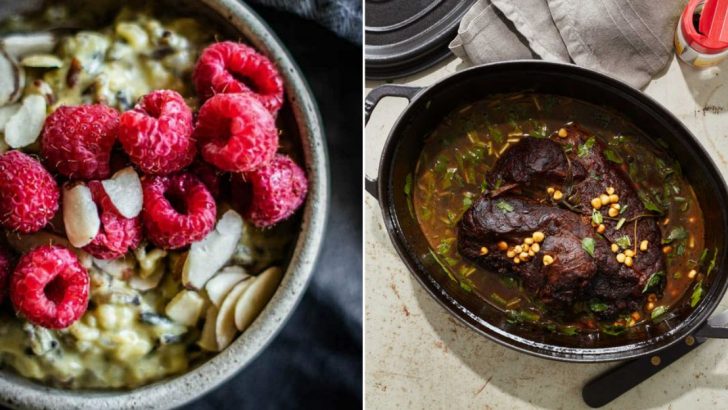Long before processed foods and industrial farming, Native American communities thrived on sustenance from the land. Their culinary traditions boasted deep respect for nature, sustainable practices, and healthful eating long before those concepts were fashionable.
Here are 25 traditional dishes that highlight the roots of American cuisine.
1. Three Sisters Stew

A trio of corn, beans, and squash known as the “Three Sisters” formed a cornerstone of Indigenous agriculture. Each plant helped the others grow, reflecting a synergy that created a nourishing, stew-like meal.
Tossed together with simple seasonings and slow-cooked, this stew celebrates balance and cooperation. Tribes passed down the knowledge that these three crops, when grown together, fostered better yields.
2. Pueblo Blue Corn Mush
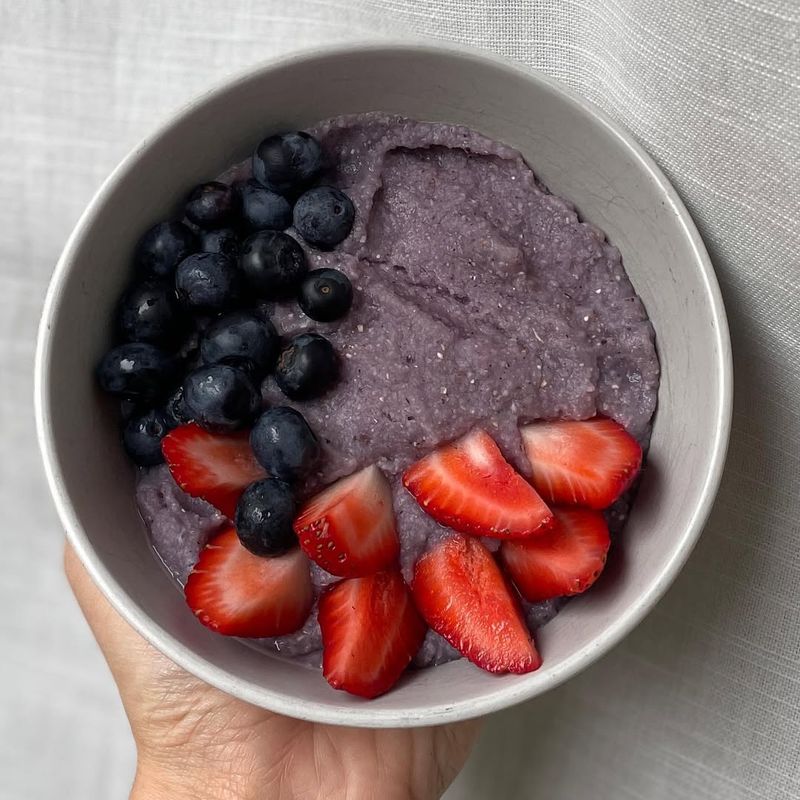
Deep in the Pueblos of the Southwest, blue corn mush united heritage with practical nutrition. Finely ground blue cornmeal blended with water and a touch of culinary ash, creating a unique porridge-like dish.
Its striking color hinted at its mineral richness, prized for strengthening the body in harsh desert conditions. The distinct, almost smoky taste brought comfort in a demanding environment.
3. Acorn Flour Bread
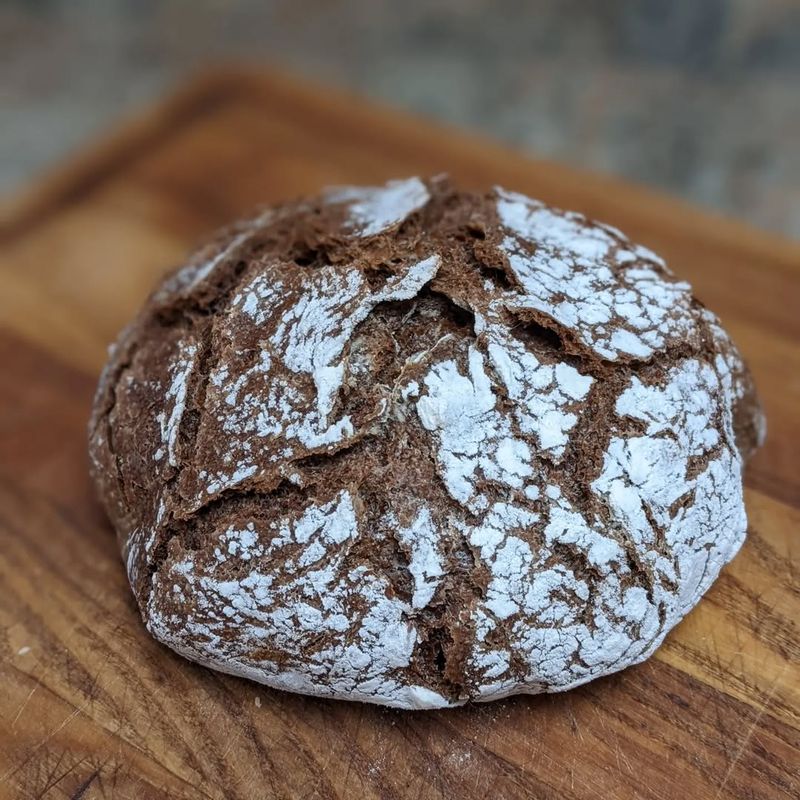
Nutty acorn flour formed the basis of a rustic, satisfying bread. The labor-intensive process required leaching bitter tannins from acorns before grinding them into a fine powder.
Generations of Native tribes stored these acorns as reliable, high-energy staples. Baking the flour into bread offered a sense of sweetness and resilience in trying times.
4. Frybread
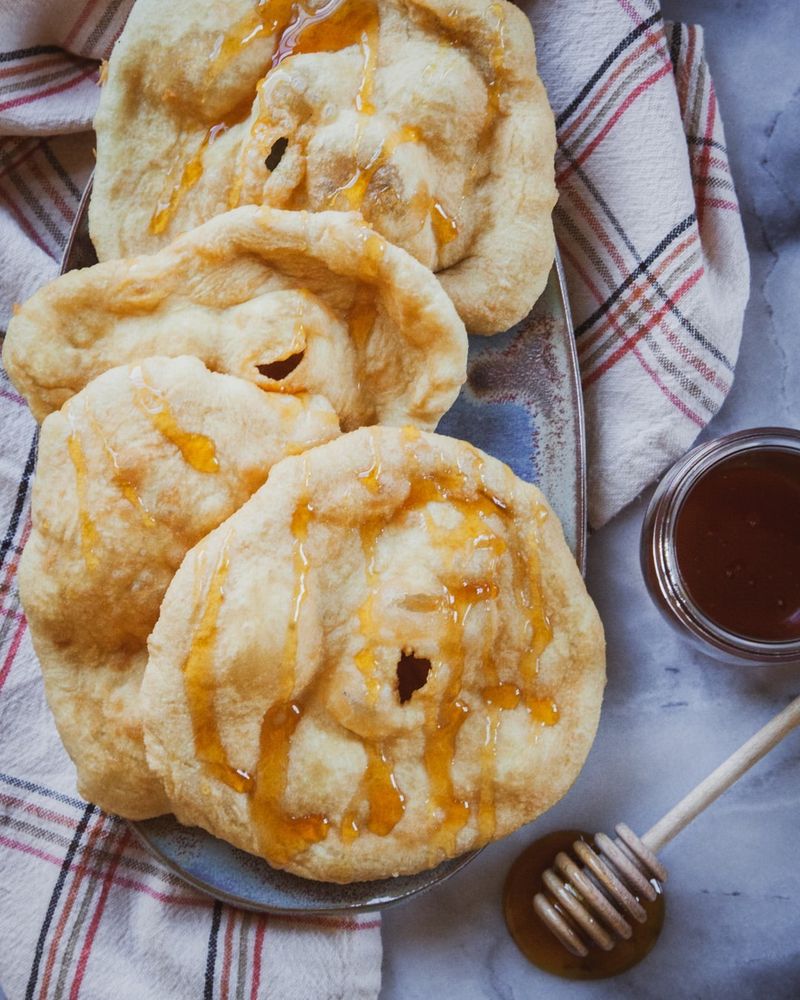
A crispy, golden circle of dough known as frybread stands at once as a comfort food and a reminder of complex history. Prepared with flour, salt, and leavening, it puffs up in hot oil to a pillowy texture.
Though introduced after forced relocations, many have embraced it, transforming it into a cultural staple. Today, it holds a dual legacy of survival and community tradition.
5. Wild Rice & Cranberry Pudding

Wild rice and cranberry pudding proved that dessert need not be laden with processed sugar. Earthy grains met tart berries, resulting in a subtly sweet, hearty dish.
Long soaks and gentle simmering coaxed out flavors that paid homage to the Great Lakes region. Served warm or chilled, it exemplified resourceful cooking with local ingredients.
6. Bison & Berry Pemmican
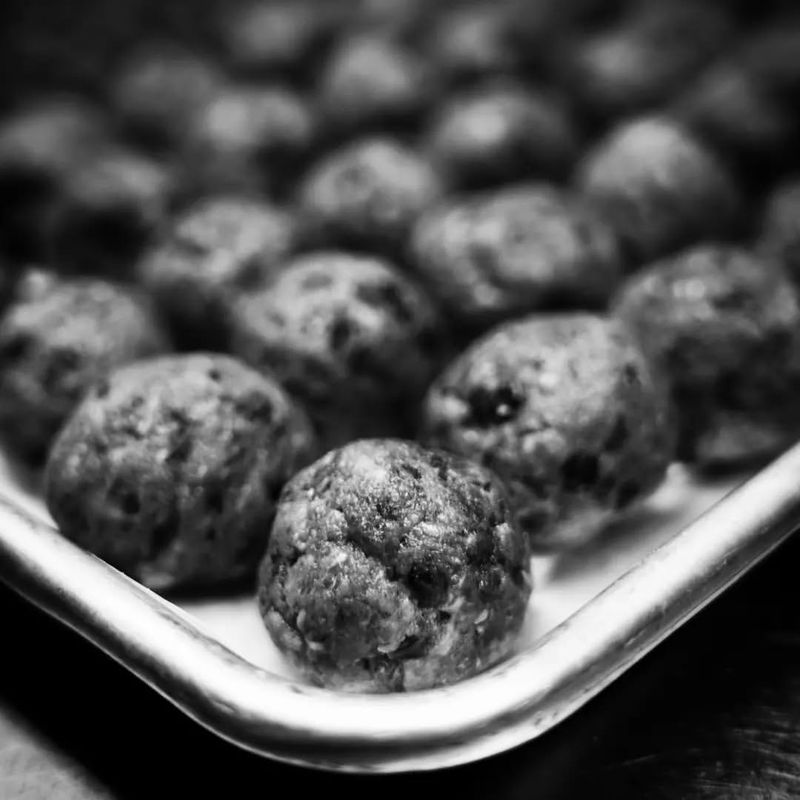
A block of bison and berry pemmican packed high-calorie fuel into a compact form. Dried bison meat fused with rendered fat and crushed berries for a concentrated burst of nutrition.
Nomadic tribes and early explorers relied on its extended shelf life during grueling journeys. Though dense and slightly oily, it symbolized raw survival in a single bite.
7. Salmon Cooked On Cedar Planks

Salmon cooked on cedar planks showcased the Pacific Northwest’s bounty. The fragrant wood infused a gentle smoke into the tender pink flesh, highlighting the fish’s natural richness.
Native coastal communities relished this method for its simplicity and pure taste. Every succulent bite captured the spirit of rivers teeming with life.
8. Venison Jerky
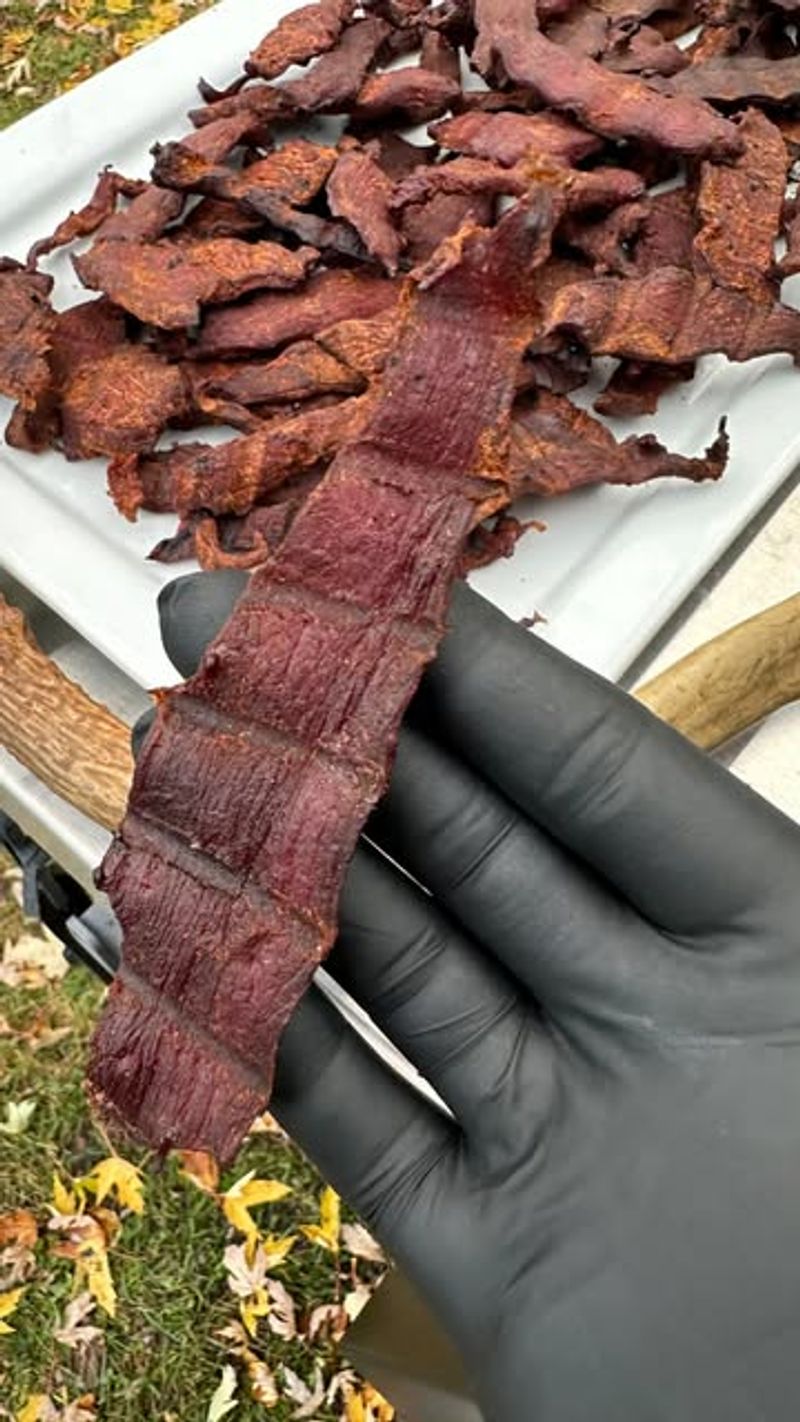
Venison jerky emerged from necessity, delivering lean protein in a form that resisted spoilage. Thin strips of deer meat seasoned with salt or mild spices dried into a chewy, savory snack.
In hunting seasons, families would preserve an abundance of game to last the year. This jerky became a lifeline on journeys where fresh cooking wasn’t an option.
9. Elk Stew With Root Vegetables
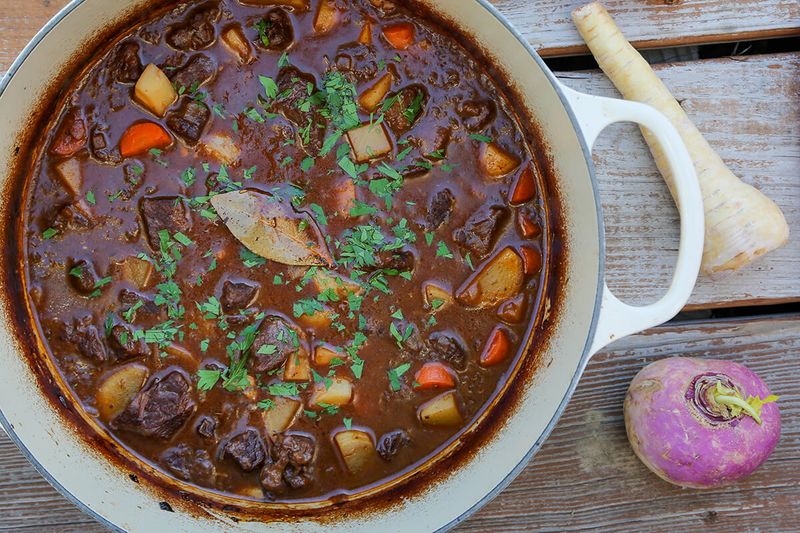
Simmering chunks of elk, hearty root vegetables, and modest seasonings made for a robust stew. Slowly melting the tougher cuts created a rich, thick broth steeped in flavor.
Tribes and frontier settlers turned to elk stew for its reliable, filling warmth. Even with minimal ingredients, it offered crucial energy in unforgiving landscapes.
10. Stuffed Trout With Wild Herbs
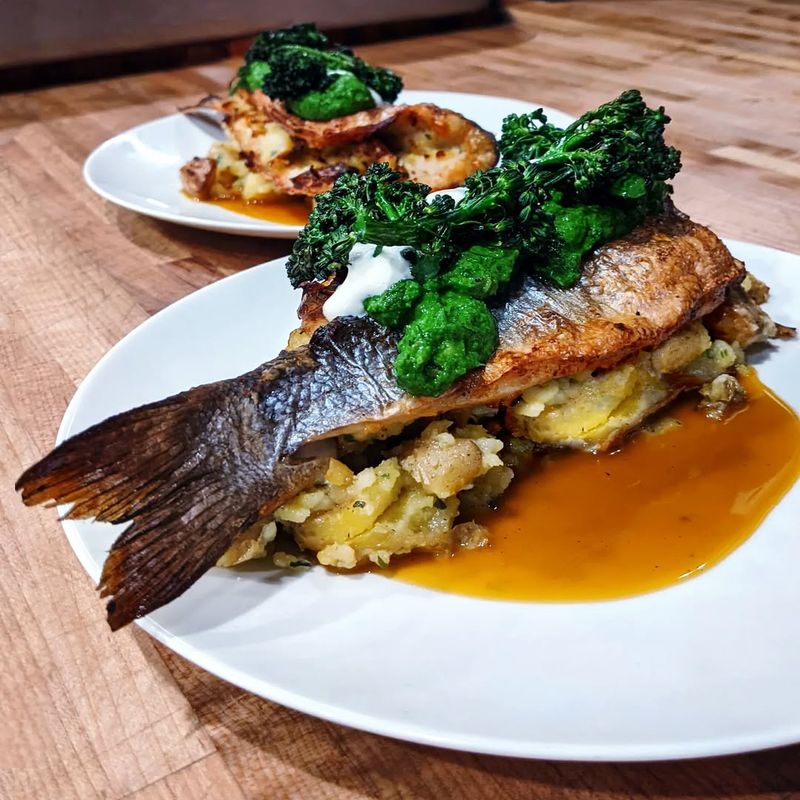
Stuffed trout seasoned with wild herbs locked in a delicate, aromatic taste. The fish, caught fresh from rivers or lakes, cooked swiftly over open flames or hot stones.
Its succulent texture, paired with herbal notes, reminded people that nature’s bounty was abundant. These flavor-packed fillets brought hope amid the daily struggle for survival.
11. Chokecherry Wojapi
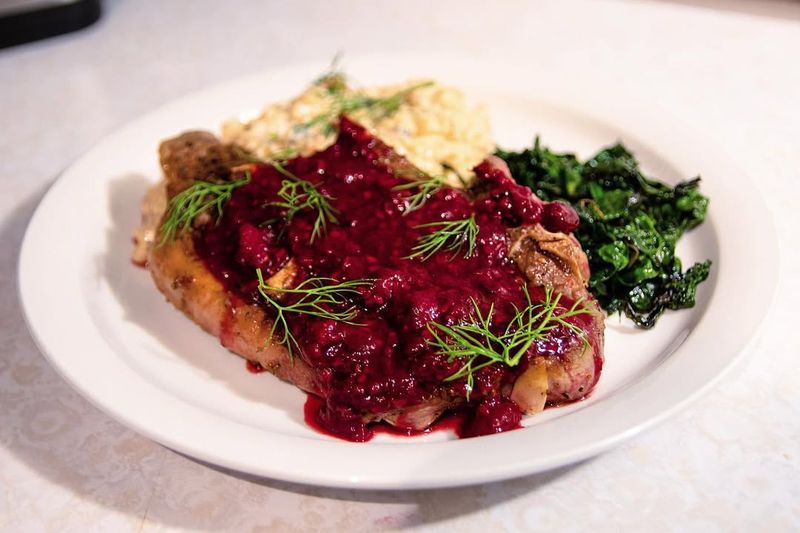
Chokecherry wojapi, a thick berry sauce, brightened up otherwise simple meals. The cherries, boiled down with minimal sweetener, burst with tang and color.
Often drizzled over meats or breads, it struck a balance between tartness and subtle sweetness. This sauce revealed a creative approach to using local fruits.
12. Hickory Nut Soup
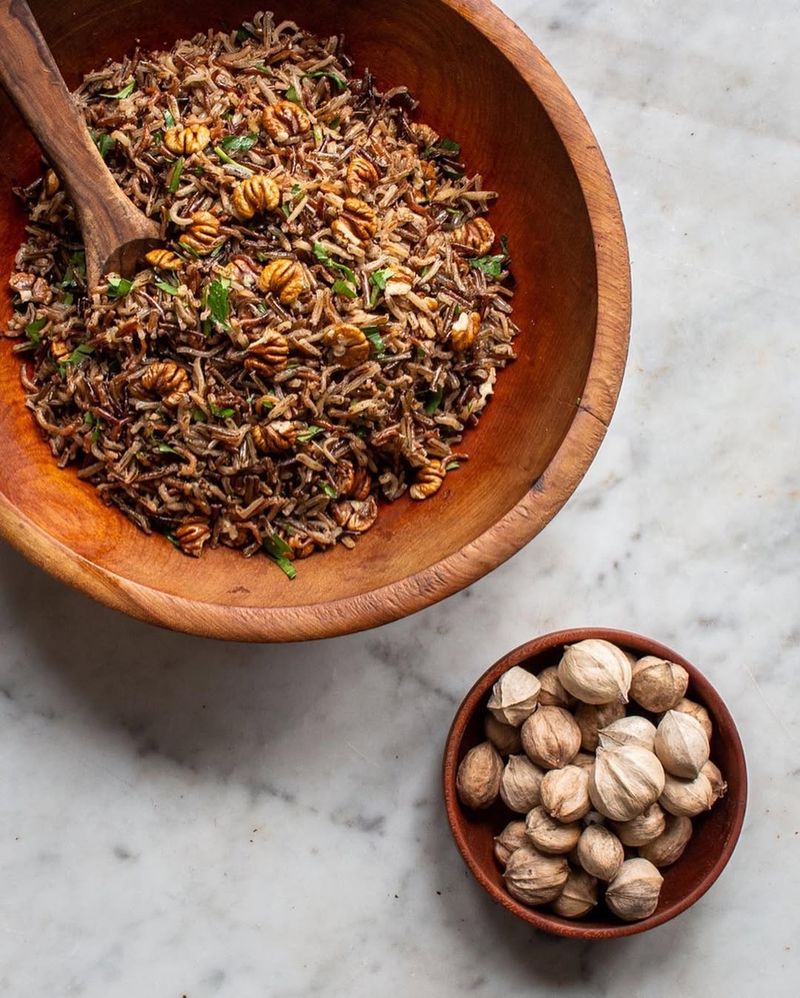
A warm bowl of hickory nut soup combined crushed nuts, water, and sometimes wild game scraps. The result was creamy, earthy, and loaded with nutrients from the luscious nuts.
Crafted by Southeastern tribes, it showcased a knack for pulling maximum sustenance from each resource. Its hearty flavor and smooth consistency told stories of a deeply rooted food tradition.
13. Wild Onion & Sunflower Seed Salad
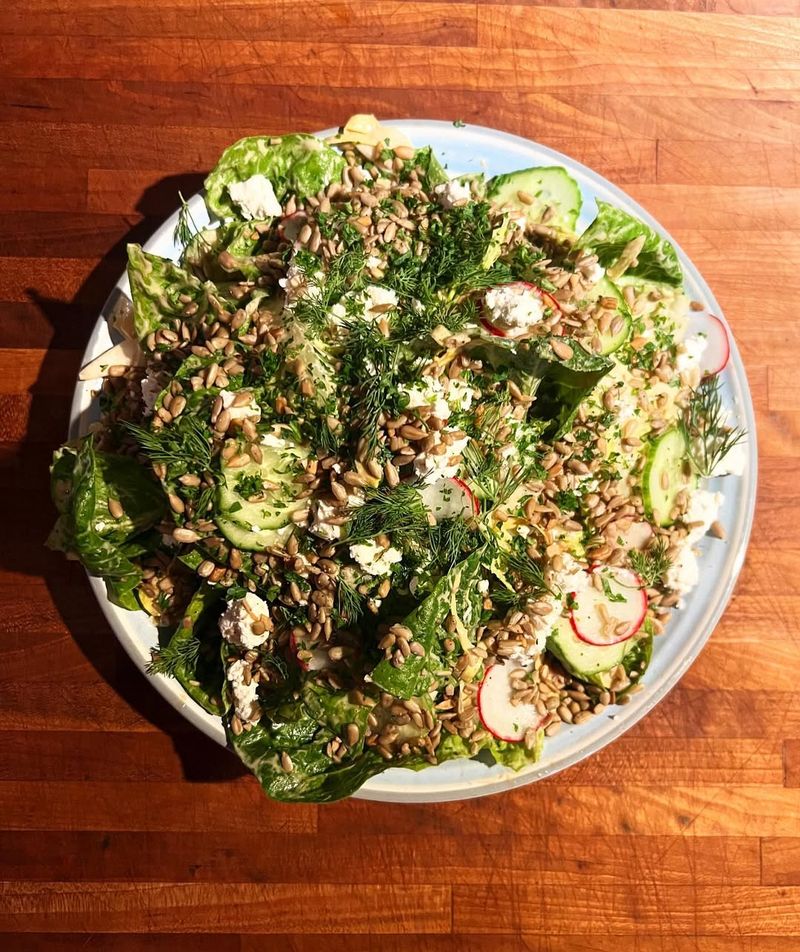
Wild onions and sunflower seeds came together in a raw or lightly cooked salad. Crisp onion stems offered a gentle spice, while toasted seeds contributed a protein boost and nutty crunch.
Each handful paid tribute to wide open prairies and the resourcefulness of local tribes. This salad delivered a fresh, earthy taste that stood out in a world of heavier fare.
14. Roasted Sunchokes

Roasting sunchokes turned these knobby tubers into a slightly sweet, nutty side dish. Their starchy flesh softened in the heat, revealing a mild artichoke-like flavor.
Early gatherers discovered that these unassuming roots offered surprising depth. Roasted sunchokes not only satisfied hunger but also honored the land’s hidden offerings.
15. Cattail Shoots & Roots
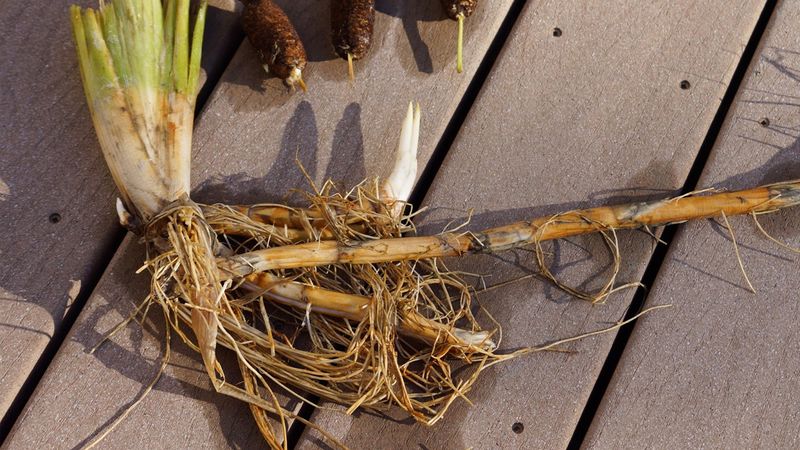
A pan of cattail shoots and roots served as a final fallback in marshy areas. Peeled and sliced, these parts carried a mild, almost cucumber-like taste.
Resourceful tribes recognized cattails as a versatile plant that could be eaten raw or cooked. They transformed swampy wetlands into lifesaving pantries for those with the knowledge to use them.
16. Hominy & Bison Soup

A big pot of hominy and bison soup showcased dried corn kernels swollen into large, chewy morsels floating alongside rich, gamey bison bits. The resulting broth was filling and smoky.
Tribes in the Plains and Southwest turned to this dish for hearty nourishment. Each bowl strengthened the bond between farmland staple and wild game.
17. Nixtamalized Corn Tortillas
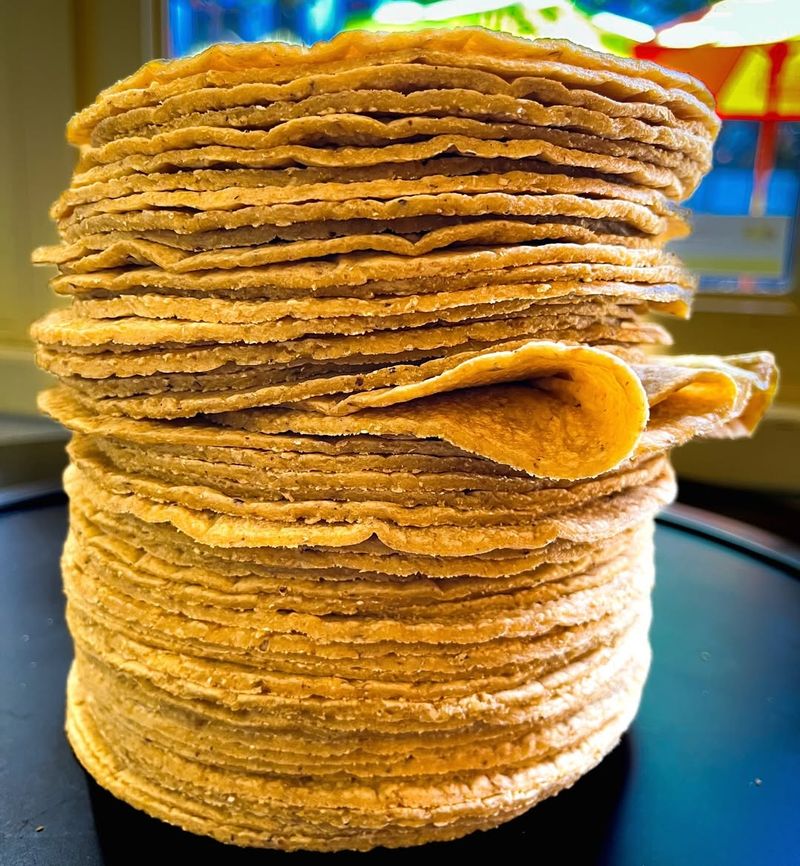
Nixtamalized corn tortillas added a nutritious twist to a well-known staple. By soaking kernels in an alkaline solution, the corn became more digestible and protein-rich.
These tortillas formed a foundation for many Indigenous meals, wrapping flavorful fillings in a pleasantly soft embrace. They shone as proof that simple methods could greatly increase a food’s value.
18. Tamales With Wild Game
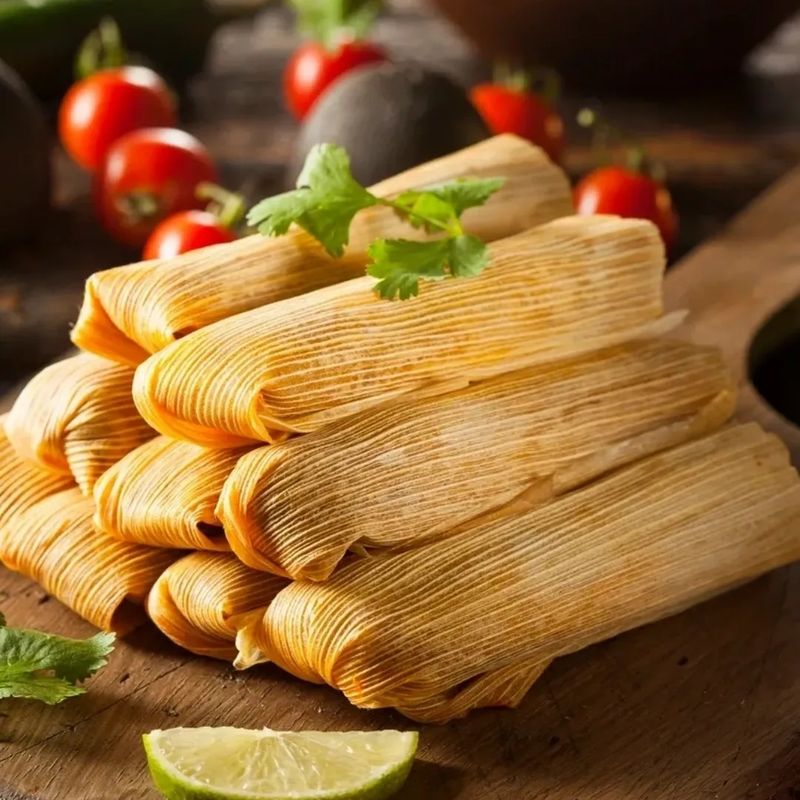
Tamales packed with wild game or fish offered a portable, flavorful feast. A layer of masa enveloped a savory filling, all wrapped snugly in husks or leaves before steaming.
Ancient methods of cooking highlight how Indigenous peoples maximized ingredients. The result tasted both wholesome and hearty, preserving moisture and flavor within each precious parcel.
19. Popcorn With Maple Syrup Glaze
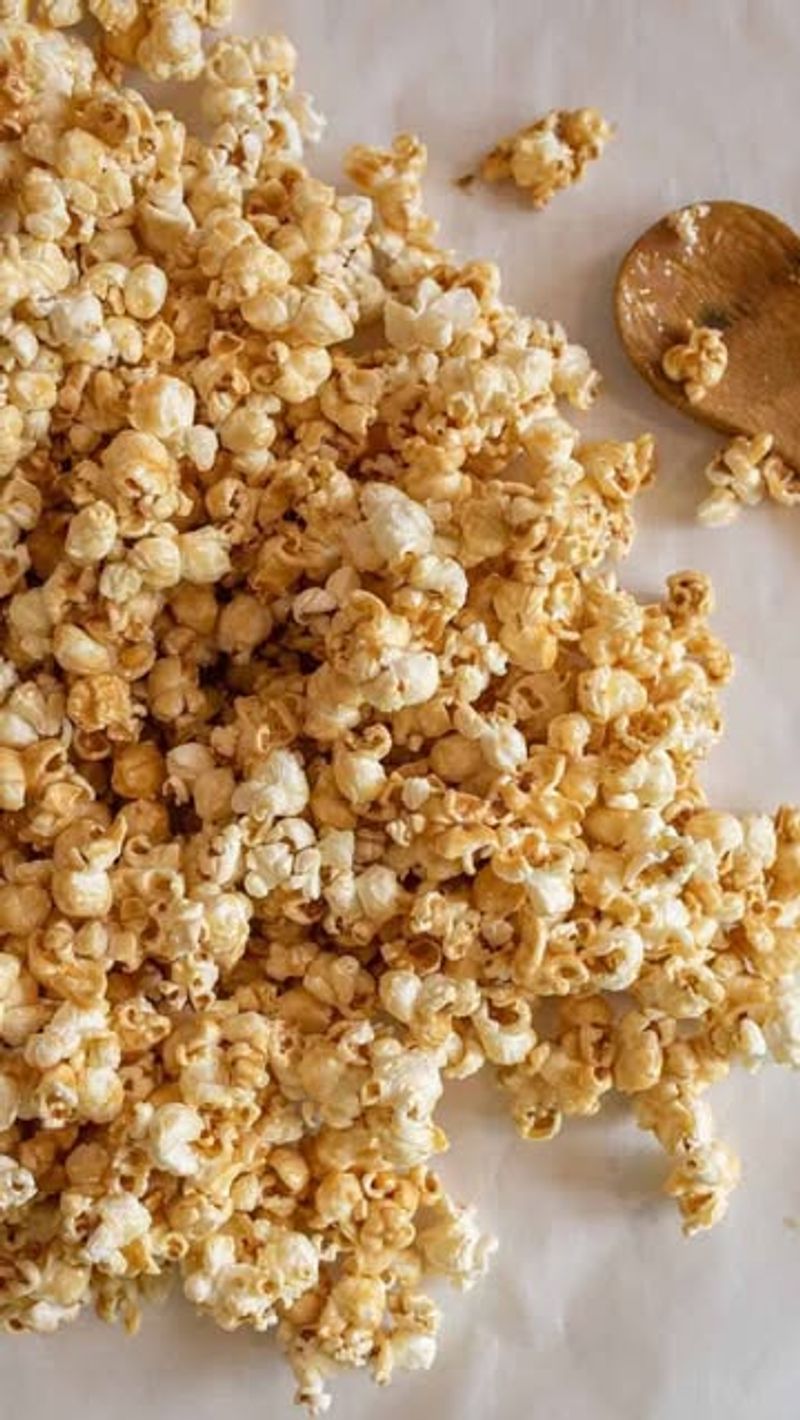
Popcorn drizzled with a maple syrup glaze turned an ordinary snack into a sweet-salty sensation. Popped kernels soaked up the amber goodness, becoming lightly crunchy and appealingly sticky.
Indigenous tribes introduced popping corn to colonists, revealing the versatile nature of this humble grain. Marrying maple syrup with popcorn symbolized a union of forest and field bounty.
20. Corn & Bean Succotash
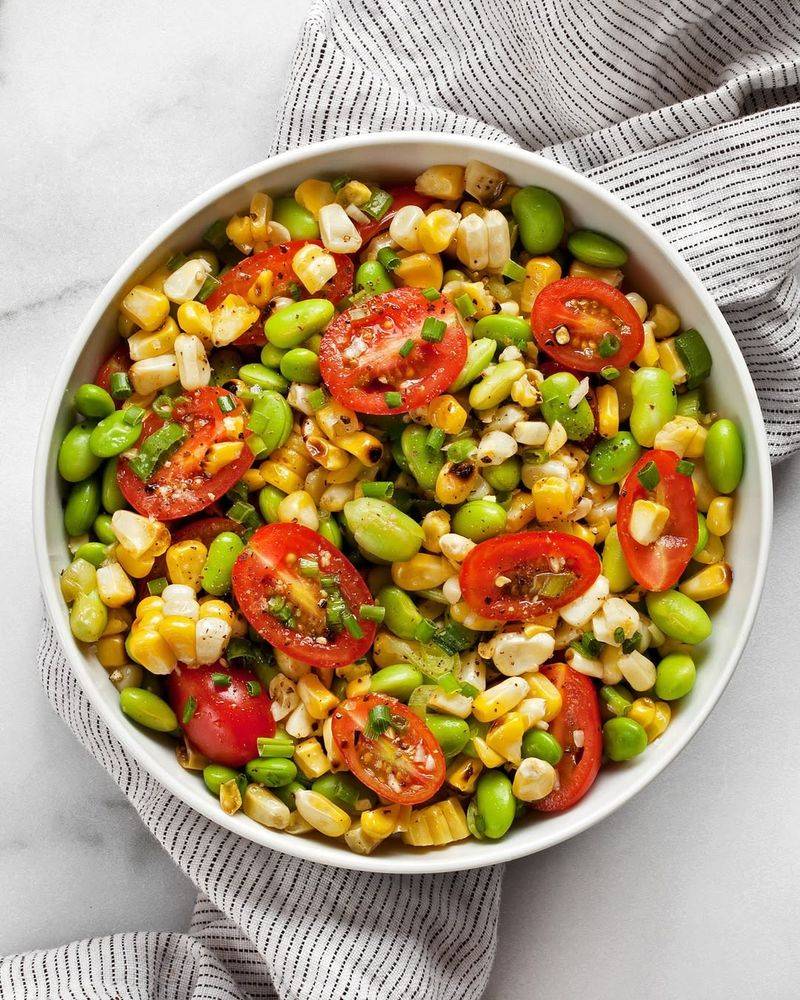
A steamy bowl of corn and bean succotash brought garden-fresh produce together in colorful harmony. Corn contributed sweetness, while beans and peppers lent protein and spice.
This dish radiated warmth and convenience, requiring minimal fuss to deliver a nutrient-packed meal. Tribes recognized the synergy of these plants long before modern science praised it.
21. Sweet Corn & Maple Pudding

Sweet corn mingled with the sugary richness of maple syrup to become a comforting pudding. The blend of ground corn and thick syrup yielded a creamy dessert close to a porridge.
Indigenous cooks used the best local ingredients in a show of culinary simplicity. Its smooth, luxurious texture offered a gentle end to an often harsh day.
22. Pine Nut Cakes

Pine nut cakes provided a subtle sweetness and delicate crunch, reflecting Southwestern traditions. Roasted pine nuts ground into a paste gave each cake a distinct, nutty aroma.
Small yet dense, they captured the arid landscapes’ hidden treasures. The careful harvesting of pine nuts underscored a deep respect for nature’s gifts.
23. Wild Plum Jam
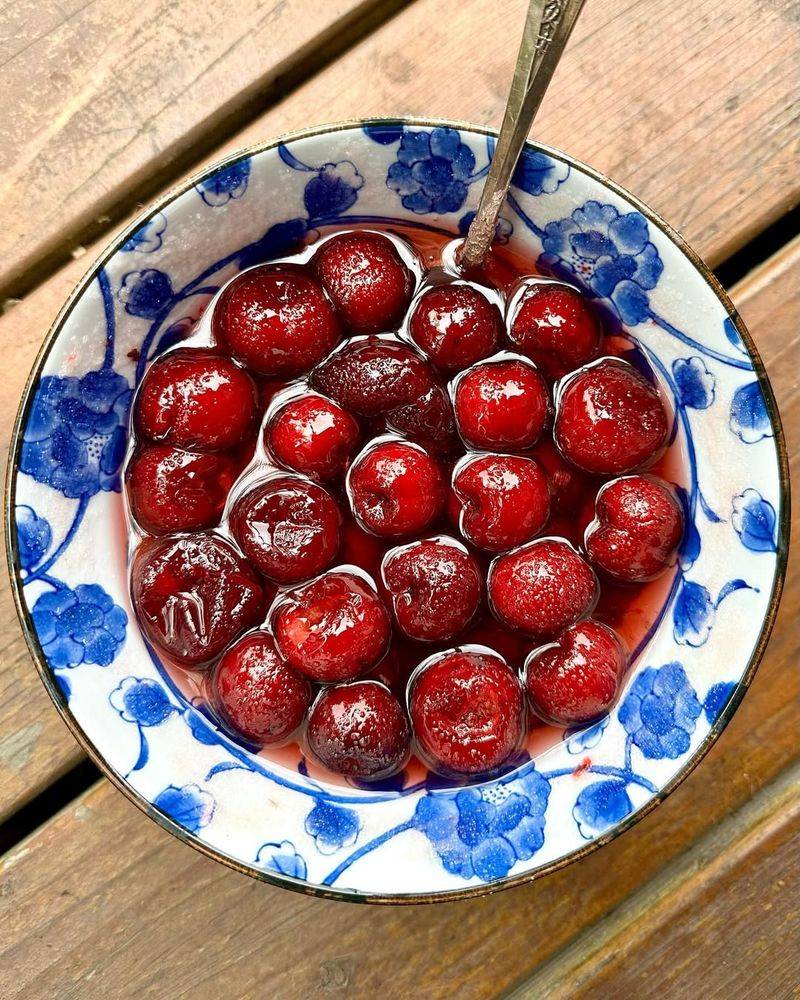
A wild plum jam combined tart plums with minimal sweetener, preserving the fruit’s intense flavor. Its vivid color matched the tangy, slightly acidic taste bursting in every spoonful.
Tribes relished seasonal produce, transforming the short harvest into a treat for colder days. This jam showcased the skillful balance between fruit’s natural edge and soft sweetness.
24. Maple Sugar Candy
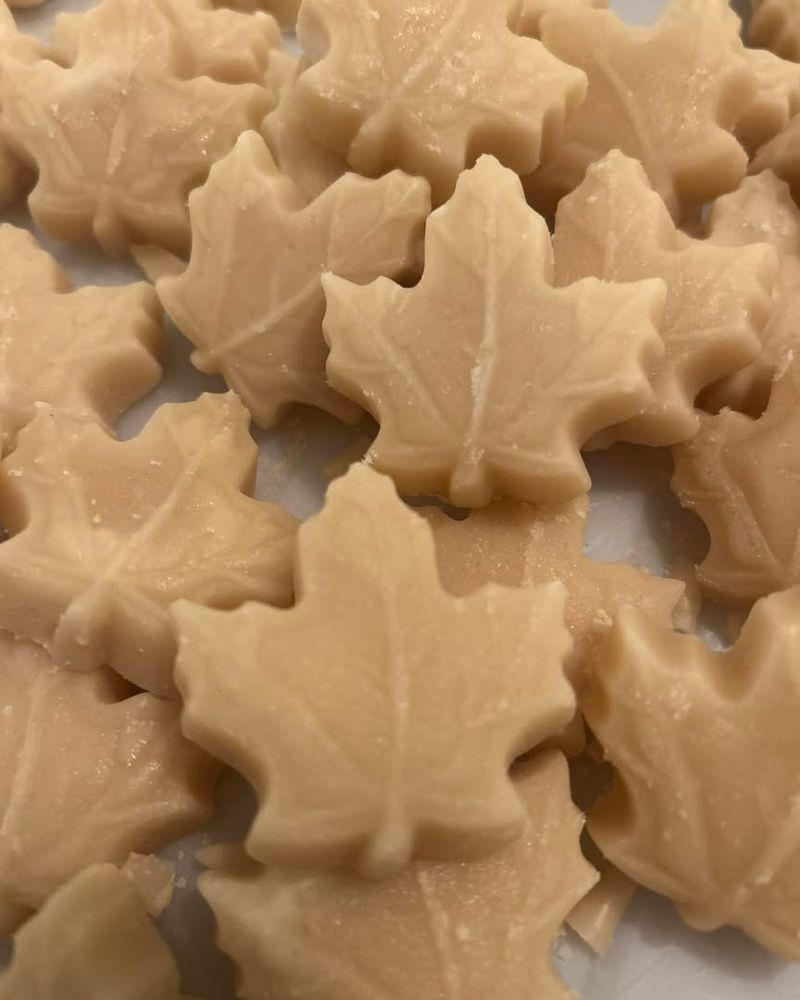
Maple sugar candy emerged from boiling down sap until it formed crystalline, caramel-like blocks. The robust maple flavor offered a treat once prized in Northeastern woodlands.
Collecting and processing maple sap required patience and technique. The resulting candy rewarded that labor with a rich sweetness that lingers on the tongue.
25. Black Walnut & Honey Cakes
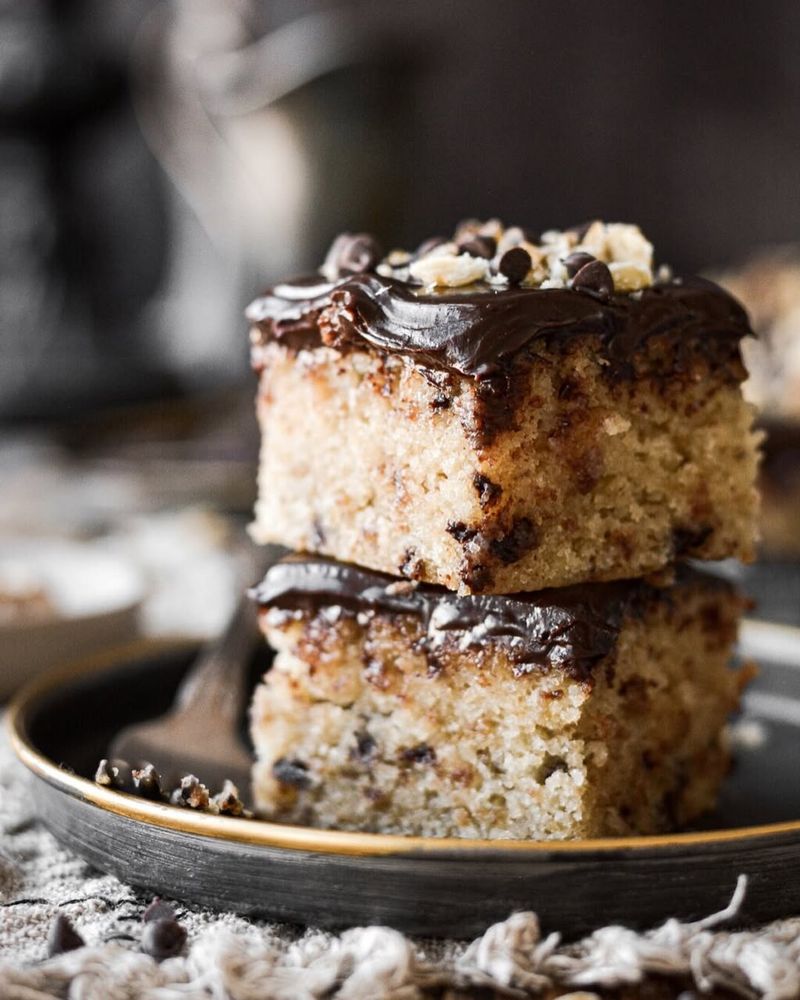
Black walnut and honey cakes presented a soft, protein-rich dessert that utilized indigenous nuts and wild honey. Crushed walnuts added texture, while honey bound everything in subtle sweetness.
Early communities recognized the high value of walnuts for protein and oils. Each bite celebrated local abundance, bridging tradition and nourishment effortlessly.

